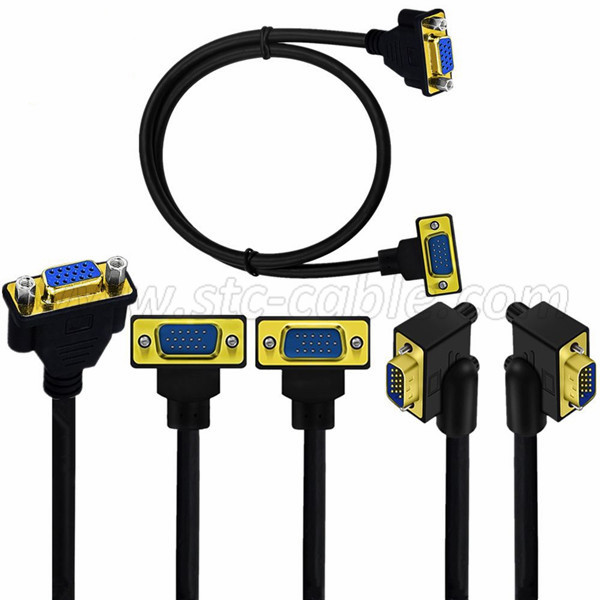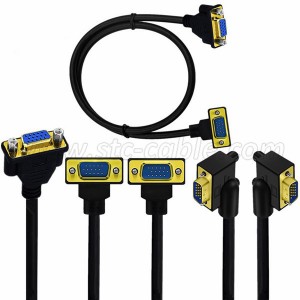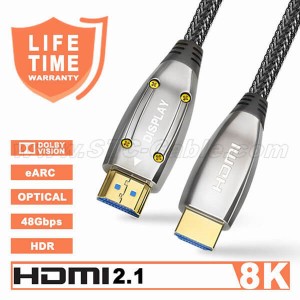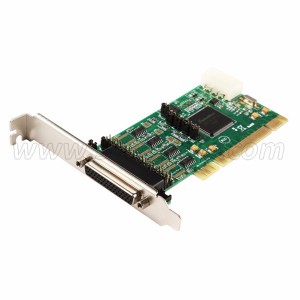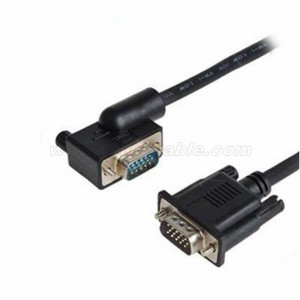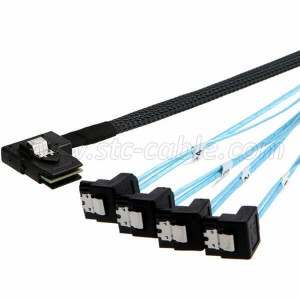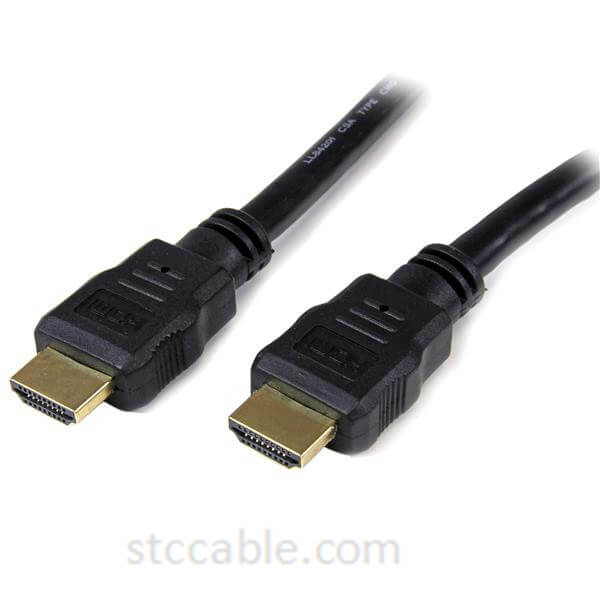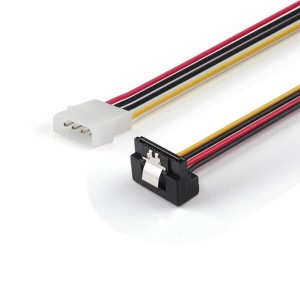90 Degree VGA Male to VGA Female Cable
Applications:
- Connector A: 1*VGA-15Pin Male
- Connector B: 1*VGA-15Pin Female
- Cable length: 0.5m
- 90-degree down/up/left/right angle VGA male to straight VGA Female extension cable.
- Thumbscrews can be removed by pulling and unscrewing them from the mold. This makes it an even lower-profile cable.
- Tested to all VGA video frequencies.
Product Detail
Product Tags
| Technical Specifications |
| Warranty Information |
| Part number STC-FF034-D
Part number STC-FF034-U Part number STC-FF034-L Part number STC-FF034-R Warranty 3-year |
| Hardware |
| Cable Jacket Type PVC - Polyvinyl Chloride
Cable Shield Type Aluminum-Mylar Foil with Braid Connector Plating Gold |
| Connector |
| Connector A 1 - VGA (15 pins, High-Density D-Sub) Male
Connector B 1 - VGA (15 pins, High-Density D-Sub) Female |
| Physical Characteristics |
| Cable Length 0.5m
Color Black Connector Style 90 degrees down/Up/Left/Right Angle to Straight Product Weight 0.5 lb [0.2 kg] Wire Gauge 32 AWG |
| Packaging Information |
| Package Quantity 1Shipping (Package)
Weight 0.5 lb [0.2 kg] |
| What's in the Box |
Gold Plated 90 Degree VGA Cable, 90 degree down up left right angle VGA Male to VGA Female Cable 1080P Full HD Computer Monitor Cable 0.5M.
|
| Overview |
|
1> The VGA interface is the most widely used interface type on graphics cards, and most graphics cards have this type of interface. The port has one male and one female\two males\two females\class
2> The VGA interface is a D-type interface with a total of 15 pinholes, divided into three rows, five in each row. Among them, in addition to 2 NC (Not Connect) signals, 3 display data buses, and 5 GND signals, the more important ones are 3 RGB color component signals and 2 scan synchronization signals HSYNC and VSYNC pins. The color component in the VGA interface adopts the RS343 level standard. The peak-to-peak voltage of the RS343 level standard is 1V. The VGA interface is the most widely used interface type on graphics cards, and most graphics cards have this type of interface. Some graphics cards without a VGA interface but with a DVI (Digital Visual Interface) interface can also convert the DVI interface to a VGA interface through a simple adapter. Usually, graphics cards without a VGA interface will come with such an adapter.
3> Nowadays, most computers are connected to external display devices through an analog VGA interface. The display image information generated digitally inside the computer is converted into R, G, and B three primary color signals, and row, Field synchronization signal, the signal is transmitted to the display device through the cable. For analog display devices, such as analog CRT monitors, the signal is directly sent to the corresponding processing circuit to drive and control the picture tube to generate images. For digital display devices such as LCD and DLP, a corresponding A/D (analog/digital) converter needs to be configured in the display device to convert the analog signal into a digital signal. After D/A and A/D2 conversions, some image details are inevitably lost. There is nothing wrong with the application of the VGA interface to CRT monitors, but if it is used to connect display devices such as LCD, the image loss in the conversion process will slightly reduce the display effect.
The specification table of VGA is as follows:256 KiB of Video RAM 16-color and 256-color modes A total of 262144 color plates (6 bits each for red, green, and blue, total (2^6)^3) Optional 25.2 MHz or 28.3 MHz processing frequency Up to 720 horizontal pixels Up to 480 lines Up to 70 Hz update rate Vertical Blanking interrupt (not all cards support it) Flat mode: up to 16 colors (4-bit panel) Packed-pixel mode: 256 colors (Mode 13h) Ability to scroll smoothly Some "Raster Ops" support Barrel shifter Support split screen
VGA supports APA (All Points Addressable) mode, which can control pixels individually, and also supports alphanumeric text mode. The standard graphics modes are as follows:640×480×16 colors 640×350×16 colors 320×200×16 colors 320×200×256 colors (Mode 13h) It also supports analog drawing at previous resolutions: EGA, CGA, and MDA. Applicable equipment Connect the output device with a VGA interface to the display device, widely used in computers, monitors, projectors, high-definition TVs, and other equipment
|
